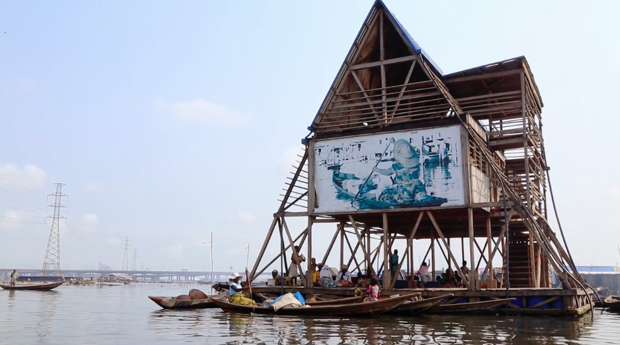Filmmakers Envision the Future of Cities
Published on by Robert Brears, Founder of Our Future Water, Young Water Leaders, Mitidaption & Author (Springer Nature, Wiley) in Technology
By the middle of the century, the share of urban dwellers is projected to hit 66 percent of the global population—some six billion people. To accommodate the ballooning figures, cities will have to get creative.
“Is future urbanization going to be a good thing or a bad thing?” asks filmmaker Oscar Boyson. “If you care about people,” he adds, “this is going to be the defining question of our time.”

Any answers are likely to be complicated and numerous—but chances are good that there’s a lot to be learned by hashing out possible solutions with as many voices as possible.
In pursuit of examples, Boyson fired off a quick YouTube video soliciting suggestions for places and projects. His effort generated 1,500 responses across 75 countries.
Boyson had immersed himself in urbanist texts by the likes of Jane Jacobs and Jan Gehl, to name a few, but he wanted to, as he puts it, take a “quick trip around the world and see what is sticking.” So he ponied up for one of American Airlines’ round-the-world tickets, and, over the course of two weeks, jetted from New York to Santiago, Auckland, Sydney, Singapore, Seoul, Mumbai, London, Copenhagen, and Venice. Back stateside, he hit Detroit, L.A., and Boston.
The final result is an 18-minute film, The Future of Cities, which splices analysis from the likes of Janette Sadik-Kahn and Edward Glaeser with mini-profiles of folks innovating on the ground.
Instead of hiring professional fixers to coordinate his travels and help pair him with sources, Boyson met up with people who had seen his initial video and agreed to show him the city through their lens. His contacts ranged from college kids to academics and architects.
As soon as he touched down, Boyson hit the streets—or, when he wasn’t able to visit in person, viewers sent footage to him. (A student in Hong Kong, for instance, filmed Shenzhen street scenes when he went home to the city for the weekend.) “Pretty much everyone I emailed, even on three hours’ notice, was ready to rock,” Boyson says.
Faced with similar problems—a shrinking stock of affordable housing, car-choked streets—cities could do well to swap solutions.
“Because cities inherently just don’t compete with each other, there’s a huge opportunity to collaborate with other cities,” Lauren Lockwood, Boston’s chief digital officer, says in the film. Boyson highlights some examples: Could a water usage tracking app, which aims to push back against utility shutoffs in Detroit, help places like Santiago and L.A., which are struggling with their own water-supply challenges? Could other cities adapt Santiago’s free electric rickshaws, or Singapore’s cap on the duration of a car’s lease?
What about reimagining paved thoroughfares as public space or curbing the places where cars can roam?

A school in Lagos is built from locally available materials that float. (Oscar Boyson)
In the film, Jockin Aruputham, the president of Slum Dwellers International, and Morton Kabell, Copenhagen’s mayor for technical and environmental affairs, advocate incremental, citizen-driven initiatives. Boyson chronicles other cities that exemplify the concept of “ kanju”— a term that Dayo Olopade, author of The Bright Continent, translates as “hustling” or “reimagining challenges as opportunities to innovate.”
In Karachi, for example, bricks are made from tightly packed bags, while in Lagos, a school in a zone prone to flooding was retrofit to float. Residents pitch in to make it happen.
That idea echoes the role Boyson sees himself playing. “I’m more of an organizer of data and information than a guy telling you how it is,” he says.
He envisions himself as a curator of voices and perspectives, not an issuer of dogma. He hopes this project is the first chapter of an ongoing conversation. The common denominator, he says, will be “going to real places and connecting with real people.” When it comes to outfitting cities for their future residents, he adds, it’s crucial to consider “who we’re making them for, and who we’re changing them with.”
Those on-the-ground perspectives, he adds, are key. “The best thing about cities, and the internet, is that they connect people.”
Source: City Lab
Media
Taxonomy
- Smart Meters
- Sustainability
- Agriculture
- Sustainable Cities